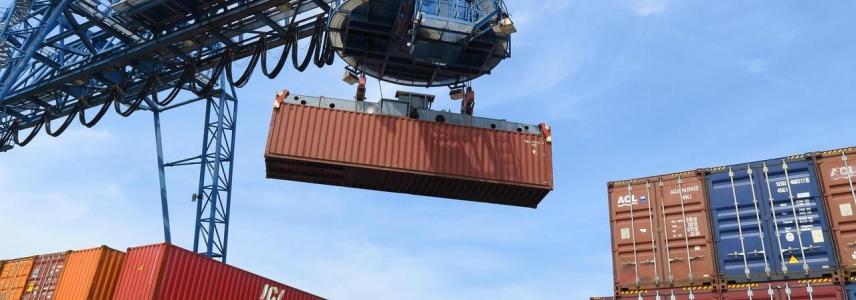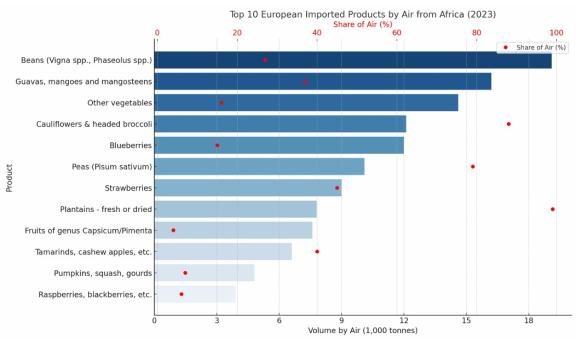Changing transport from air to sea needs cooperation and innovations

Trends in fresh fruit and vegetables often aim at sustainability. For example, supermarket chains in northern Europe prefer local produce and want to lower carbon emissions transport more and more. Importers now choose sea transport over air freight more often to achieve that goal. As a result, overseas suppliers must use more and more new technologies to join the low-carbon trade.
Reducing and stopping air transport
Retailers in southern Europe still use air transport for fresh fruit and vegetables. But, large retailers in northern Europe promised to use air freight as little as possible or stop. Leading retailers, such as Lidl, ICA and Albert Heijn, have stopped importing fresh fruit and vegetables by air for most products. That means they now have limited access to products from certain locations. Also, no air transport impacts farmers and livelihoods in landlocked countries in the Global South.
A recent CBI focus group showed that some producing countries still depend on air freight. The Committee Linking Entrepreneurship-Agriculture-Development (COLEAD) states that air freight supports at least 1.25 million agricultural jobs in Africa. Fresh products, like fine beans and tree-ripened mangoes, reach Europe mostly because of air freight. So, to secure some of this trade and jobs, technological developments are crucial.

Transport technology improvements
Technology is essential to stop transporting fruit by air. Transporters need:
- A controlled atmosphere;
- Innovative packaging solutions; and
- Real-time tracking.
These technologies help to:
- Preserve freshness;
- Extend shelf life; and
- Improve the efficiency of the shipping process.
Some innovative examples to keep produce fresh during longer transport are:
- Advanced refrigeration systems: Reefer containers and trucks with modern refrigeration systems offer the best temperature and humidity, which are important for quality and freshness;
- Modified atmosphere packaging (MAP): This technology creates a controlled environment inside packaging. MAP helps the fruit last longer and reduces spoilage. By using the right gas mix, MAP keeps produce fresh at sea;
- Controlled atmosphere (CA): CA technology allows adjusting gas levels inside containers. Adjusted gas levels slow down ripening;
- Real-time tracking and monitoring: Modern tracking systems update users about temperature, location and other important information in real-time. These updates make it possible to act in time before something goes wrong;
- Source loading: Source loading means immediately loading fruit from the packing plant into reefer containers. It is quicker and avoids too much handling;
- Cold treatment: Cold treatment keeps fruits between specific temperatures to control pests and pathogens, ensuring the produce safety and quality;
- Ethylene blockers: Ethylene blockers delay fruit ripening. The most common and often-used regulating agent is 1-methylcyclopropene (1-MCP). It is available in small bags or patented stickers. But mind that 1-MCP treatment is not allowed for organic fruits.
The power of cooperation
Other hurdles are the inefficiencies in the:
- Supply chain;
- Logistics; and
- Paperwork.
Some products must cross many borders before reaching a seaport. This makes it difficult for countries such as Rwanda, Zimbabwe and Ethiopia to export by sea. Sustainable trade needs suppliers, importers, transport companies and local governments to work together.
An example is the recent trial shipment of roses between Kenya and the port of Rotterdam. The trial shows that investments, cooperation and innovation can lead to a successful change in transportation from air to sea.
Learn more
Fresh produce suppliers must research new technologies and meet regulations for better supply chains and more sustainable transport. Learn more about buyer requirements and trends. The tips on using digital tools may help you find technology providers and solutions to become a more efficient supplier.
Michel Peperkamp (ICI Business) wrote this news article for CBI.
Stay informed
To stay informed on the latest developments in the fresh fruit and vegetables sector, subscribe to our newsletter.